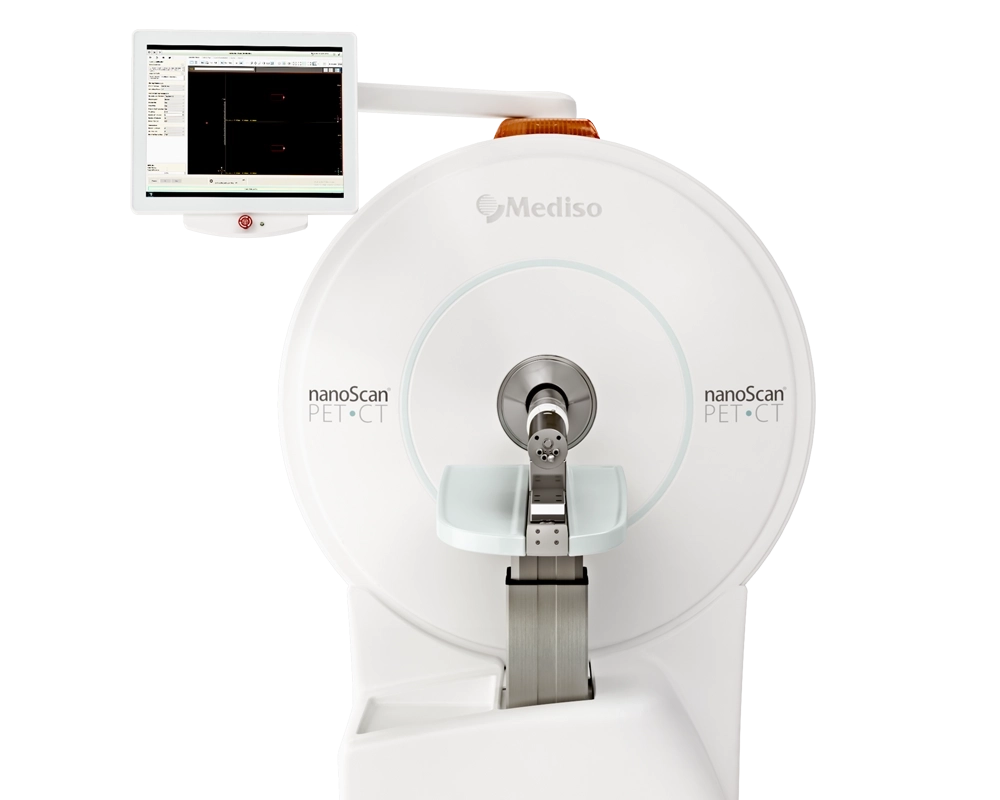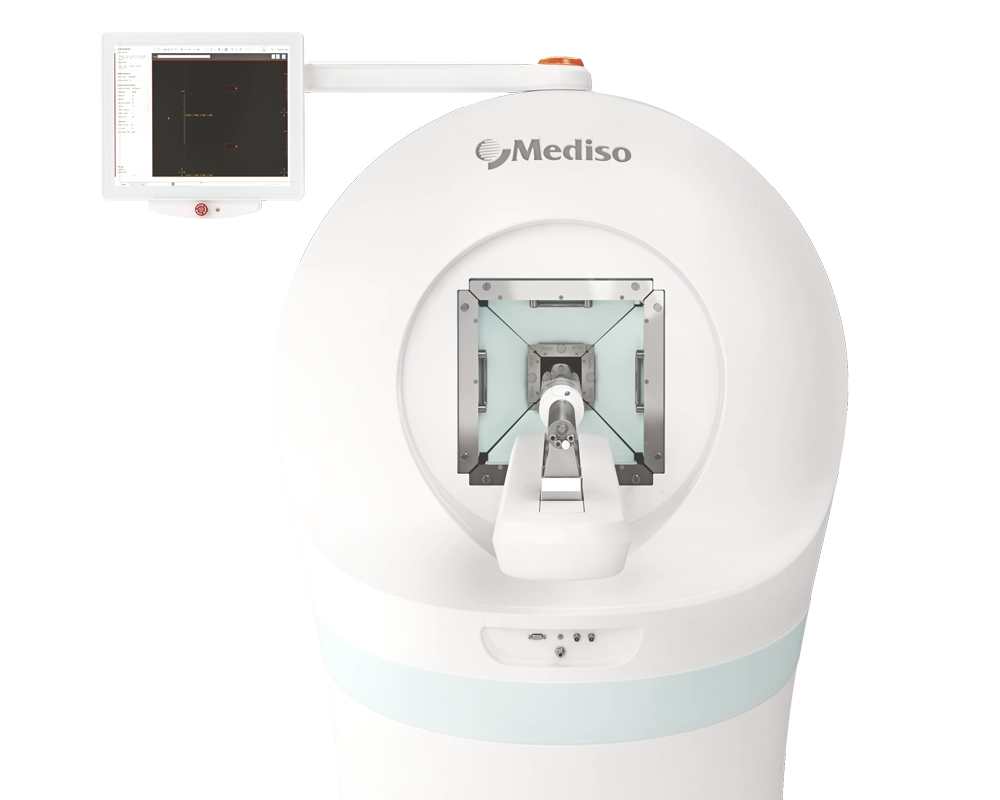Chelator-Free/Chelator-Mediated Radiolabeling of Colloidally Stabilized Iron Oxide Nanoparticles for Biomedical Imaging
2021.06.25.
Sofia Papadopoulou et al, Nanomaterials, 2021
Summary
The aim of this study was to develop a bioimaging probe based on magnetic iron oxide nanoparticles (MIONs) surface functionalized with the copolymer (p(MAA-g-EGMA)), which were radiolabeled with the positron emitter Gallium-68. The synthesis of the hybrid MIONs was realized by hydrolytic condensation of a single ferrous precursor in the presence of the copolymer. The synthesized MagP MIONs displayed an average Dh of 87 nm, suitable for passive targeting of cancerous tissues through the enhanced permeation and retention (EPR) effect after intravenous administration, while their particularly high magnetic content ascribes strong magnetic properties to the colloids. Two different approaches were explored to develop MIONs radiolabeled with 68Ga: the chelator-mediated approach, where the chelating agent NODAGA-NHS was conjugated onto the MIONs (MagP-NODAGA) to form a chelate complex with 68Ga, and the chelator-free approach, where 68Ga was directly incorporated onto the MIONs (MagP). Both groups of NPs showed highly efficient radiolabeling with 68Ga, forming constructs which were stable with time, and in the presence of PBS and human serum. Ex vivo biodistribution studies of [68Ga]Ga- MIONs showed high accumulation in the mononuclear phagocyte system (MPS) organs and satisfactory blood retention with time. In vivo PET imaging with [68Ga]Ga-MagP MIONs was in accordance with the ex vivo biodistribution results. Finally, the MIONs showed low toxicity against 4T1 breast cancer cells. These detailed studies established that [68Ga]Ga- MIONs exhibit potential for application as tracers for early cancer detection.
Results from nanoScan® PET/CT
For the animal experiments, female normal Swiss albino and athymic SCID mice were used. For the development of experimental tumors, 1x106 4T1 mouse mammary carcinoma cells were subcutaneously inoculated into the front left limb of SCID mice. Studies were carried out on the 6th day after cell inoculation.
Following ex vivo biodistribution studies, in order to assess the passive accumulation of [68Ga]Ga-MIONs in tumor-bearing mice, in vivo PET/CT scans were performed on a 4T1 tumor model. Tumor-bearing mice were fasted for a period of 12 h prior to imaging. The PET studies were conducted using 2% isoflurane anesthesia in oxygen at 0.8 l/min. The lateral tail vein of the mouse was injected with 100µL/7.42MBq of [68Ga]Ga-MagP. Radiotracer uptake time was 120 min p.i. and was followed by a 20-min PET static scan. During uptake time, the animal was anesthetized, and its body temperature was maintained at 36°C on the scanner bed.
PET scans were performed using nanoScan PET/CT. Prior to PET imaging, a CT scan was performed for attenuation correction and anatomic localization. The X-ray beam energy was set at 50 kVp, the exposure time at 300 msec, and current at 670 µA. The number of projections per rotation was 480, and the slice thickness was 250 µm. The PET image reconstruction was performed using a version of 3D OSEM algorithm (Tera-Tomo 3D PET image reconstruction algorithm) with voxel dimensions of 0.4 x 0.4 x 0.4 mm. Dead time, decay, scatter, attenuation, and axial sensitivity corrections and normalization were applied to PET data. Image analysis was performed with the Mediso InterView Fusion software.
Results showed radiotracer uptake in the tumor, while the main organs of accumulation were the liver and spleen. These results are in direct agreement with the ex vivo biodistribution results initially performed in tumor-bearing mice.
 Full article on mdpi.com
Full article on mdpi.com
How can we help you?
Don't hesitate to contact us for technical information or to find out more about our products and services.
Get in touch
